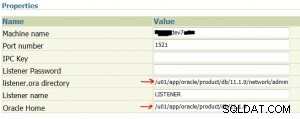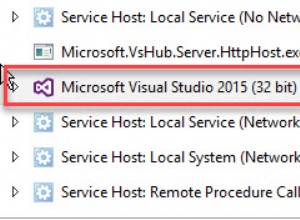Saya telah melakukan ini pada sejumlah proyek
Misalnya saya memiliki hubungan satu ke banyak dari ASPNetUsers ke Notifications. Jadi di kelas ApplicationUser saya di dalam IdentityModels.cs saya punya
public virtual ICollection<Notification> Notifications { get; set; }
Kelas Notifikasi saya memiliki kebalikannya
public virtual ApplicationUser ApplicationUser { get; set; }
Secara default EF kemudian akan membuat penghapusan kaskade dari Notification ke AspNetUsers yang tidak saya inginkan - jadi saya juga memiliki ini di kelas Konteks saya
modelBuilder.Entity<Notification>()
.HasRequired(n => n.ApplicationUser)
.WithMany(a => a.Notifications)
.HasForeignKey(n => n.ApplicationUserId)
.WillCascadeOnDelete(false);
Ingat saja definisi untuk AspNetUSers diperluas di kelas ApplicationUser di dalam IdentityModels.cs yang dibuat untuk Anda oleh scaffolding studio visual. Kemudian perlakukan seperti kelas/tabel lain di aplikasi Anda
UPDATE - berikut adalah contoh model lengkap
public class ApplicationUser : IdentityUser
{
[StringLength(250, ErrorMessage = "About is limited to 250 characters in length.")]
public string About { get; set; }
[StringLength(250, ErrorMessage = "Name is limited to 250 characters in length.", MinimumLength=3)]
public string Name { get; set; }
public DateTime DateRegistered { get; set; }
public string ImageUrl { get; set; }
public virtual ICollection<Notification> Notifications { get; set; }
public async Task<ClaimsIdentity> GenerateUserIdentityAsync(UserManager<ApplicationUser> manager)
{
// Note the authenticationType must match the one defined in CookieAuthenticationOptions.AuthenticationType
var userIdentity = await manager.CreateIdentityAsync(this, DefaultAuthenticationTypes.ApplicationCookie);
// Add custom user claims here
return userIdentity;
}
}
public class Notification
{
public int ID { get; set; }
public int? CommentId { get; set; }
public string ApplicationUserId { get; set; }
public DateTime DateTime { get; set; }
public bool Viewed { get; set; }
public virtual ApplicationUser ApplicationUser { get; set; }
public virtual Comment Comment { get; set; }
}
}




